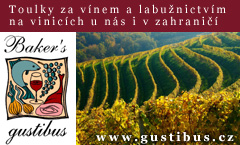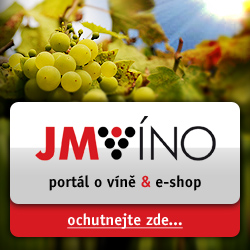Wine Trip Collio/Gori¹ka Brda - March 2015
 Collio is a tiny zone in the north-easternmost corner of Italy in the region of Friuli-Venezia Giulia following the border and continuing on into neighbouring Slovenia. Il Collio Goriziano, as it is properly called in Italian after the province and not too distant town of Gorizia, is indeed the same area as Gori¹ka Brda, which forms part of the Slovenian Primorje wine region. Collio is a tiny zone in the north-easternmost corner of Italy in the region of Friuli-Venezia Giulia following the border and continuing on into neighbouring Slovenia. Il Collio Goriziano, as it is properly called in Italian after the province and not too distant town of Gorizia, is indeed the same area as Gori¹ka Brda, which forms part of the Slovenian Primorje wine region.
When, in the fallout from the Second World War, this area was divided into two zones on the newly drawn up Italian-Yugoslav border, the town of Gorizia was allotted to Italy. Soon a new town began to be built on the Yugoslav side, which got the name Nova Gorica (New Gorizia). However, during the time of the Austro-Hungarian empire this was all considered as a single unit - Il Collio Goriziano = Gori¹ka Brda ("collio", "colli" meaning "hill", "hills" in Italian, while in the Slovene language "brda" means the same) and the population have always been bilingual on both sides of the divide. And, as we will see later, on the Italian side we find a plethora of Slovene surnames and this applies also the other way round (for instance Movia, the name of Ale¹ Kristanèiè's winery in Dobrovo, is the surname of his Italian great grandmother). The people of Collio/Brda have always done business with one another on both sides of the frontier, which was never guarded by any high security, even under the Communist regime or later prior to Slovenia's entry into the EU. Italians own vineyards in Brda, while Slovenians have land in Collio. This phenomenon even existed when Tito was in power, when during the day workers were allowed to cultivate their vineyards on the far side of the border, while at night the borders were closed. No wonder, as Ale¹ observed, once this had been one country and then seen many changes of boundaries brought about through the fortunes of war and politics: "My grandfather fought in the Austro-Hungarian army, my father in the Italian, I served in the Yugoslav military forces, while my son will one day see service in the Slovene army!" his Italian great grandmother). The people of Collio/Brda have always done business with one another on both sides of the frontier, which was never guarded by any high security, even under the Communist regime or later prior to Slovenia's entry into the EU. Italians own vineyards in Brda, while Slovenians have land in Collio. This phenomenon even existed when Tito was in power, when during the day workers were allowed to cultivate their vineyards on the far side of the border, while at night the borders were closed. No wonder, as Ale¹ observed, once this had been one country and then seen many changes of boundaries brought about through the fortunes of war and politics: "My grandfather fought in the Austro-Hungarian army, my father in the Italian, I served in the Yugoslav military forces, while my son will one day see service in the Slovene army!"
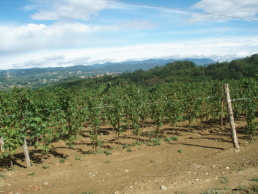 The Collio region possesses a great beauty, mildly undulating landscape, in which terrassed vineyards alternate with orchards, fields and forests - in short a model of natural diversity. It is drawn over twenty kilometres and in its widest part measures just four, nevertheless the vineyards cover some first-rate sites, amounting to 1,500 hectares in all. The climatic conditions are influenced as much by the proximity of the Alps as by that of the Adriatic sea. Production is primarily of white wines (80%), which enjoy a great reputation not only in the rest of Italy but also abroad, thanks to one little word - terroir. Terroir, which is an often erroneously applied and poorly understood term, is the unexplainable and magical and effectively untranslatable combination of soil, climate, grape varieties, tradition, and the savoir-faire of the vintner. It emanates from the French word terre, meaning land or earth. The Collio region possesses a great beauty, mildly undulating landscape, in which terrassed vineyards alternate with orchards, fields and forests - in short a model of natural diversity. It is drawn over twenty kilometres and in its widest part measures just four, nevertheless the vineyards cover some first-rate sites, amounting to 1,500 hectares in all. The climatic conditions are influenced as much by the proximity of the Alps as by that of the Adriatic sea. Production is primarily of white wines (80%), which enjoy a great reputation not only in the rest of Italy but also abroad, thanks to one little word - terroir. Terroir, which is an often erroneously applied and poorly understood term, is the unexplainable and magical and effectively untranslatable combination of soil, climate, grape varieties, tradition, and the savoir-faire of the vintner. It emanates from the French word terre, meaning land or earth.
 In 1968 Collio was awarded the D.O.C. (Denominazione di Origine Controllata) status which encompasses 19 wines - 17 varietal ones plus the white and red cuvées created from two or more cultivars which bear the designation Collio Bianco and Collio Rosso - and this applies to their respective Riservas. They are as follows: Cabernet, Cabernet Franc, Cabernet Sauvignon, Chardonnay, Malvasia Istriana, Merlot, Müller-Thurgau, Picolit, Pinot Bianco, Pinot Grigio, Pinot Nero, Ribolla Gialla, the Rieslings Italico and Renano (Welschriesling and Rhine Riesling), Sauvignon Blanc, Friulano (formerly Tocai Friulano*]) and Traminer Aromatico. Many of the wines they produce have changed their style in modern times and "put on weight", as it were, so much so as gaining much favour among international customers. These are the so-called "orange wines", made by prolonged contact of the juice of white grapes with their pips and skins, followed by a long maturation, usually in the amphora-type vessels, as practised for thousands of years in the "cradle-of-wine" country Georgia. In 1968 Collio was awarded the D.O.C. (Denominazione di Origine Controllata) status which encompasses 19 wines - 17 varietal ones plus the white and red cuvées created from two or more cultivars which bear the designation Collio Bianco and Collio Rosso - and this applies to their respective Riservas. They are as follows: Cabernet, Cabernet Franc, Cabernet Sauvignon, Chardonnay, Malvasia Istriana, Merlot, Müller-Thurgau, Picolit, Pinot Bianco, Pinot Grigio, Pinot Nero, Ribolla Gialla, the Rieslings Italico and Renano (Welschriesling and Rhine Riesling), Sauvignon Blanc, Friulano (formerly Tocai Friulano*]) and Traminer Aromatico. Many of the wines they produce have changed their style in modern times and "put on weight", as it were, so much so as gaining much favour among international customers. These are the so-called "orange wines", made by prolonged contact of the juice of white grapes with their pips and skins, followed by a long maturation, usually in the amphora-type vessels, as practised for thousands of years in the "cradle-of-wine" country Georgia.
 But now to get down to the business of getting to the winemakers, their wines and sampling the excellent gastronomy of this area. After wandering round Gorizia and visiting the castle and the Memorial to the fallen of World War I near Oslavia (around the villages of Oslavia and San Floriano the war swept across with such great ferocity that not a single tree remained standing and to this day the old trenches cover thousands of bones from fallen soldiers of which a staggering 36,000 are as yet unknown), our roaming "from cellar to cellar" began at the Fiegl winery, which is to be found in the cadaster of Oslavia overlooking the beautifully afforested hill of Monte Sabotino. Martin Fiegl is one of the young generation of Collio winemakers who, since his twenties, has played a highly active role in promoting the region and its wines as vice-president of the local Consorzio. The first record of the Fiegl name in Oslavia comes from the year 1782. Martin's father Giuseppe and his uncles Alessio and Rinaldo first began bottling their output in 1992, when they owned some 20 hectares of vines which have now increased to 30, producing up to 150,000 bottles annually. But now to get down to the business of getting to the winemakers, their wines and sampling the excellent gastronomy of this area. After wandering round Gorizia and visiting the castle and the Memorial to the fallen of World War I near Oslavia (around the villages of Oslavia and San Floriano the war swept across with such great ferocity that not a single tree remained standing and to this day the old trenches cover thousands of bones from fallen soldiers of which a staggering 36,000 are as yet unknown), our roaming "from cellar to cellar" began at the Fiegl winery, which is to be found in the cadaster of Oslavia overlooking the beautifully afforested hill of Monte Sabotino. Martin Fiegl is one of the young generation of Collio winemakers who, since his twenties, has played a highly active role in promoting the region and its wines as vice-president of the local Consorzio. The first record of the Fiegl name in Oslavia comes from the year 1782. Martin's father Giuseppe and his uncles Alessio and Rinaldo first began bottling their output in 1992, when they owned some 20 hectares of vines which have now increased to 30, producing up to 150,000 bottles annually.
The Primosic winery was our next stop. Marko Primosic is such a fanatical supporter of the variety Ribolla Gialla that he even propagates it through his yellow Porsche bearing the slogan "Think Yellow, Drink Ribolla Gialla", which can be seen parked in the courtyard. His father Silvestro serves you wine of this grape from the barrel with his pipette with such unbelievable love for the orange-hued samples, words like "fresh, brilliant, elegant, light, excellently quaffable and how wonderfully it marries with the local cuisine" just gush from his lips. In the course of the subsequent visit to the vineyards we spot a tractor passing by in which sits the controversial winemaker Josko Gravner, who also has his vineyard in this locality. Although we have not actually visited him on this occasion, we certainly will on our next visit to this region... He produces wine from only two grapes (Ribolla Gialla for white wines and Pignolo for reds) by a method pre-dating Roman times, in amphorae similar to those of the Georgian kvevri, buried upright below the ground, which some people love for their great richness and complexity while others dismiss for their strange oxidative character. Worth at least a mention too is Stanislao Radikon, whose Tokaj (Tocai Friulano), following the ban on the use of the name Tocai presents his wine under the trademark "Jakot" as a protest (this is in fact Tokaj spelt backwards!). variety Ribolla Gialla that he even propagates it through his yellow Porsche bearing the slogan "Think Yellow, Drink Ribolla Gialla", which can be seen parked in the courtyard. His father Silvestro serves you wine of this grape from the barrel with his pipette with such unbelievable love for the orange-hued samples, words like "fresh, brilliant, elegant, light, excellently quaffable and how wonderfully it marries with the local cuisine" just gush from his lips. In the course of the subsequent visit to the vineyards we spot a tractor passing by in which sits the controversial winemaker Josko Gravner, who also has his vineyard in this locality. Although we have not actually visited him on this occasion, we certainly will on our next visit to this region... He produces wine from only two grapes (Ribolla Gialla for white wines and Pignolo for reds) by a method pre-dating Roman times, in amphorae similar to those of the Georgian kvevri, buried upright below the ground, which some people love for their great richness and complexity while others dismiss for their strange oxidative character. Worth at least a mention too is Stanislao Radikon, whose Tokaj (Tocai Friulano), following the ban on the use of the name Tocai presents his wine under the trademark "Jakot" as a protest (this is in fact Tokaj spelt backwards!).
Beware now - do not confuse Villa Russiz with Russiz Superiore! The winery Villa Russiz, which is to be found in Capriva del Friuli, has French roots and its story is fascinating. In 1869 Count Théodore de la Tour married the Austrian noblewoman Elvine Ritter von Zahony in Graz. As a wedding present the young newlyweds received 100 hectares of vineyards and agricultural land in the region of Collio. Count Théodore, who had studied viti- and vini-culture, was convinced that French grapes would flourish in his vineyards and as the very first person in Friuli began planting Pinot Blanc, Pinot Gris, Chardonnay, Sauvignon Blanc and Cabernet Sauvignon. More than 150 years later the oenologist at today's Villa  Russiz, Gianni Menotti, confirms that the combination of these grapes with the local micro-climatic and geological conditions adds up to a formidable and unique terroir. The de la Tours were without issue and countess Elvine soon began to take care of the poor children in the neighbourhood. After her widowing she founded an orphanage along with Countess Adele Cerruti (known also as Sister Adele). When she and Elvine decided to return to Austria at the end of the First World War, she left Villa Russiz to the Austrian state which, with the new frontiers, handed it over to the Italians and so the non-profit-making organization and the Elvine de la Tour Foundation came into being. As it happens, the wines of Villa Russiz are wonderfully represented in the Czech Republic by Chovan & Partners. Their entry level offering "Les Enfants" IGT Venezia Giulia is a magnificent blend of Pinot Grigio with Pinot Bianco, while further into the range we find some very fine varietal examples, i.e. Ribolla Gialla, Sauvignon Blanc, Pinot Grigio, Pinot Bianco, Malvasia, Friulano, Chardonnay, whilst the flagship wines come in the form of the cuvées "Gräfin de la Tour" Chardonnay and "Graf de la Tour" Merlot, both DOC Collio. Russiz, Gianni Menotti, confirms that the combination of these grapes with the local micro-climatic and geological conditions adds up to a formidable and unique terroir. The de la Tours were without issue and countess Elvine soon began to take care of the poor children in the neighbourhood. After her widowing she founded an orphanage along with Countess Adele Cerruti (known also as Sister Adele). When she and Elvine decided to return to Austria at the end of the First World War, she left Villa Russiz to the Austrian state which, with the new frontiers, handed it over to the Italians and so the non-profit-making organization and the Elvine de la Tour Foundation came into being. As it happens, the wines of Villa Russiz are wonderfully represented in the Czech Republic by Chovan & Partners. Their entry level offering "Les Enfants" IGT Venezia Giulia is a magnificent blend of Pinot Grigio with Pinot Bianco, while further into the range we find some very fine varietal examples, i.e. Ribolla Gialla, Sauvignon Blanc, Pinot Grigio, Pinot Bianco, Malvasia, Friulano, Chardonnay, whilst the flagship wines come in the form of the cuvées "Gräfin de la Tour" Chardonnay and "Graf de la Tour" Merlot, both DOC Collio.
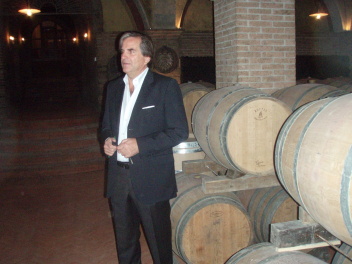 The winery of the Felluga family belongs among a number of fine wine estates in the region. Suffice to mention the names of Marco and Livio Felluga, before whose lifelong contribution to local winemaking we all have to take off our hats. The estate of Russiz Superiore in Capriva del Friuli with its magnificent villa above the catherdral of cellars has 50 hectares of vineyards which are today managed by Marco's son Roberto. The flagship wine of this establishment is the Collio Bianco Col Disore Russiz Superiore and created from uniting Pinto Bianco, Friulano (Tocai Friulano naturally!), Sauvignon Blanc and Ribolla Gialla, all vinified in large wooden barrels. The winery of the Felluga family belongs among a number of fine wine estates in the region. Suffice to mention the names of Marco and Livio Felluga, before whose lifelong contribution to local winemaking we all have to take off our hats. The estate of Russiz Superiore in Capriva del Friuli with its magnificent villa above the catherdral of cellars has 50 hectares of vineyards which are today managed by Marco's son Roberto. The flagship wine of this establishment is the Collio Bianco Col Disore Russiz Superiore and created from uniting Pinto Bianco, Friulano (Tocai Friulano naturally!), Sauvignon Blanc and Ribolla Gialla, all vinified in large wooden barrels.
Borgo del Tiglio in Brazzano (Cormons) is renowned for its ability to produce and bottle even the tiniest batch of wine - a total of 250 litres, for example. Nicola Manferrari, a former pharmacist, has been taking care of the 8.5 hectares of vineyards, which his father began buying in the 1970s, since 1981. And the tasting room here really does remind one of an apothecary's lair... The most captivating wine here comes from old vines of the (Tocai) Friulano grape variety grown on a 12,000 square metre parcel of land by the name of Ronco della Chiesa. even the tiniest batch of wine - a total of 250 litres, for example. Nicola Manferrari, a former pharmacist, has been taking care of the 8.5 hectares of vineyards, which his father began buying in the 1970s, since 1981. And the tasting room here really does remind one of an apothecary's lair... The most captivating wine here comes from old vines of the (Tocai) Friulano grape variety grown on a 12,000 square metre parcel of land by the name of Ronco della Chiesa.
The Eugenio Collavini winery can be found at the poetic address: Via della Ribolla Gialla in the commune of Gramogliano near Corno di Rosazzo. Its headquarters is the castello dating from the 16th century and overgrown with shrubbery which, during the course of my last visit, was bravely guarded by a wire-haired dachshund by the name of Ribolla. The winery is run by Manlio, grandson of Eugenio, who recently abandoned the world of politics to dedicate himself to the family estate and its 170,000 hectares under vine. In the selection we find the Villa Canlungo Pinot Grigio Green and Black label featuring the beloved dachshund (canlungo = long dog in Italian) to the fore. Also on the estate is a rustic restaurant and a shop offering regional specialities.
Not just a cellar visit and tasting awaited us at the Livon winery but also a superb luncheon created around regional delicacies. Dorino Livon had already started purchasing vineyards in  the neighbourhood of Ruttars in the mid-1960s and became a founding member of the Consorzio Collio. His sons Valneo and Tonino studied winemaking in Bordeaux, later applying their experience at home, where they completely changed their entire system of viti- vini-culture. Today Livon, which has the letter "C" (as in Collio) in its logo designed in 1930 by Erté, puts 500,000 returnable bottles of DOC Collio onto the market and upwards of a million bottles of DOC Colli Orientali and Grave del Friuli. Apart from their winery in the region of Friuli-Venezia Giulia, Livon also owns a wine estate in Tuscany (Borgo Salcetino) and in Umbria (Fattoria Col Santo). In Ruttars they also undertake a production of balsamic vinegar, whose flacon we were given as a souvenir. the neighbourhood of Ruttars in the mid-1960s and became a founding member of the Consorzio Collio. His sons Valneo and Tonino studied winemaking in Bordeaux, later applying their experience at home, where they completely changed their entire system of viti- vini-culture. Today Livon, which has the letter "C" (as in Collio) in its logo designed in 1930 by Erté, puts 500,000 returnable bottles of DOC Collio onto the market and upwards of a million bottles of DOC Colli Orientali and Grave del Friuli. Apart from their winery in the region of Friuli-Venezia Giulia, Livon also owns a wine estate in Tuscany (Borgo Salcetino) and in Umbria (Fattoria Col Santo). In Ruttars they also undertake a production of balsamic vinegar, whose flacon we were given as a souvenir.
Our final stop was at the Venica & Venica winery which is located in the commune of Cero lying in the narrow valley of the northernmost projection of the Collio region between Dolegna 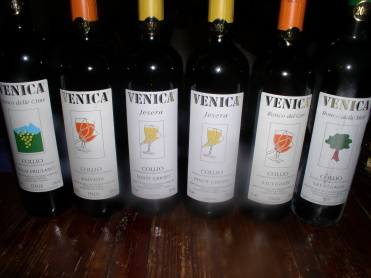 del Collio and the Slovenian border. Not far from here is the picturesque village of Scrio, from where there is a wonderful view over the vineyards Ronco delle Melle with their 40-year old Sauvignon Blanc vines, which grow alongside apple trees. This is such an unusual way of planting in Italy nowadays, that they call it promiscuo. del Collio and the Slovenian border. Not far from here is the picturesque village of Scrio, from where there is a wonderful view over the vineyards Ronco delle Melle with their 40-year old Sauvignon Blanc vines, which grow alongside apple trees. This is such an unusual way of planting in Italy nowadays, that they call it promiscuo.
We were greeted by Ornella Venica, who looks after the agriturismo and PR side of the business at this ultra-modern estate with her son Giampaolo taking care of sales and marketing. The excellent selection of white wines of DOC Collio are complemented by the three types of red wines coming from their recent acquisition of Terre di Balbia in Calabria in southern Italy.
And finally the gastronomic icing on the cake for us all: La Subida in Cormons, where we have our farewell dinner. The owners, Josko and Loredana Sirk, operate two restaurants - the first Osteria de la Subida serves snacks in the form of salads, pasta dishes, cheese variations and carpaccio, while the second, main one, Trattoria al Cacciatore de la Subida, specialises in venison and other game dishes, since Josko is also a passionate hunter. The Sirks also own a small vinegar plant and agriturismo with 16 rooms surrounded by beautiful gardens, with a swimming pool, tennis courts and stables with horses. The samples of their haute gastronomie are all here. And their wine list is quite amazing because Josko plays an important role not only for the Collio wine region but also for next-door Slovenia where he has his roots.
N.B. *] Tocai Friulano (since 2007 the term Tocai may not be used and in its place this grape variety is known only under the name Friulano) is a sad tale of an autochthonous cultivar (some assert that we are dealing here with Sauvignonasse or Sauvignon Vert, although the jury is still out on this), whose tradition stretches back into the Middle Ages. But since Italy was not capable of defending the case successfully within the EU, the designation Tokaj may only be used in Hungary for wines produced from a totally different variety.
Regional Gastronomy
This most northeastern Italian region has a strong feel of Mitteleuropa about it, since it has been at the crossroads of a diversity of cultures since time immemorial. Slav, Austro-Hungarian and Balkan peoples have always mingled hereabouts.  After the First World War a large chunk of Venezia Giulia was given to Yugoslavia while Italy was left with the provinces of Trieste and Gorizia, which were appended to Friuli to form the new region that we know today. To many visitors this part of the world does not even seem like Italy and for example near the Slovene border are settlements, like Oslavia, which are entirely Slovene, where Italians are in a complete minority. After the First World War a large chunk of Venezia Giulia was given to Yugoslavia while Italy was left with the provinces of Trieste and Gorizia, which were appended to Friuli to form the new region that we know today. To many visitors this part of the world does not even seem like Italy and for example near the Slovene border are settlements, like Oslavia, which are entirely Slovene, where Italians are in a complete minority.
All the above-mentioned factors naturally have their influence on the local gastronomy and thus we find elements of different cultures in the kitchen: yoghurt, rye bread, sauerkraut, caraway, sweet noodles with poppyseed or walnuts, strudels, etc. Furred and feathered game from the forests adjacent to the mountains is also very popular.
Recipe: Torta Pere e Mele
This cake Torta morbida pere e mele alla Nonna (grandmother's old recipe) was served at lunch by Signora Livon in the winery of the same name who willingly handed the old recipe to me afterwards.
Ingredients (for 4 persons)
3 eggs
120 g butter
120 g sugar
200 g plain flour
pinch of salt
3 apples
2 pears
peel and juice of one lemon
1 vanilla pod
1 sachet of baking powder
icing sugar for decoration Directions: Mix the egg yolks, sugar and butter, add the flour, salt and stir thoroughly. Whip the egg whites till they form peaks. Meanwhile peel the apples and pears, remove the cores and pips, chop into small pieces and fold into the pastry. Add the lemon peel along with the juice, vanilla seeds and baking powder and again beat thoroughly. Finally gradually add the whipped egg whites. Pour the dough into a previously greased cake tin and bake in a pre-heated oven at a temperature of 150° Celsius for 1 hour and 10 minutes. Decorate the cooled cake and serve, best with a hefty wine made from shrivelled grapes appassimento from the Sauvignon or Picolit varieties.
Bibliography: ANDERSON, B.: Wines of Italy, Mitchel Beazley, London 2003
BAKER, H.: Italská vína (Cesty za vínem), Grada, Prague 2005
CAPALBO, C.: Collio (Fine Wines and Foods from Italy's North-East), Pallas Athene, London 2009
FROYDA, M., BAKER, H.: Jak chutná Itálie - Buonissimo! (Kluci v akci), Edice ÈT, Prague 2009
JOHNSON, H.: Pocket Wine Guide, Mitchell Beazley, London 2015
www.italianwines.cz/encyklopedie-italskeho-vina
|


